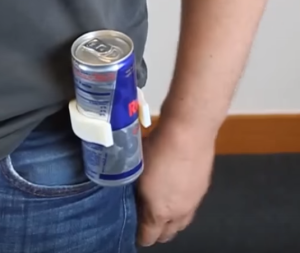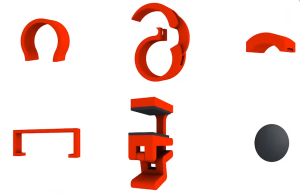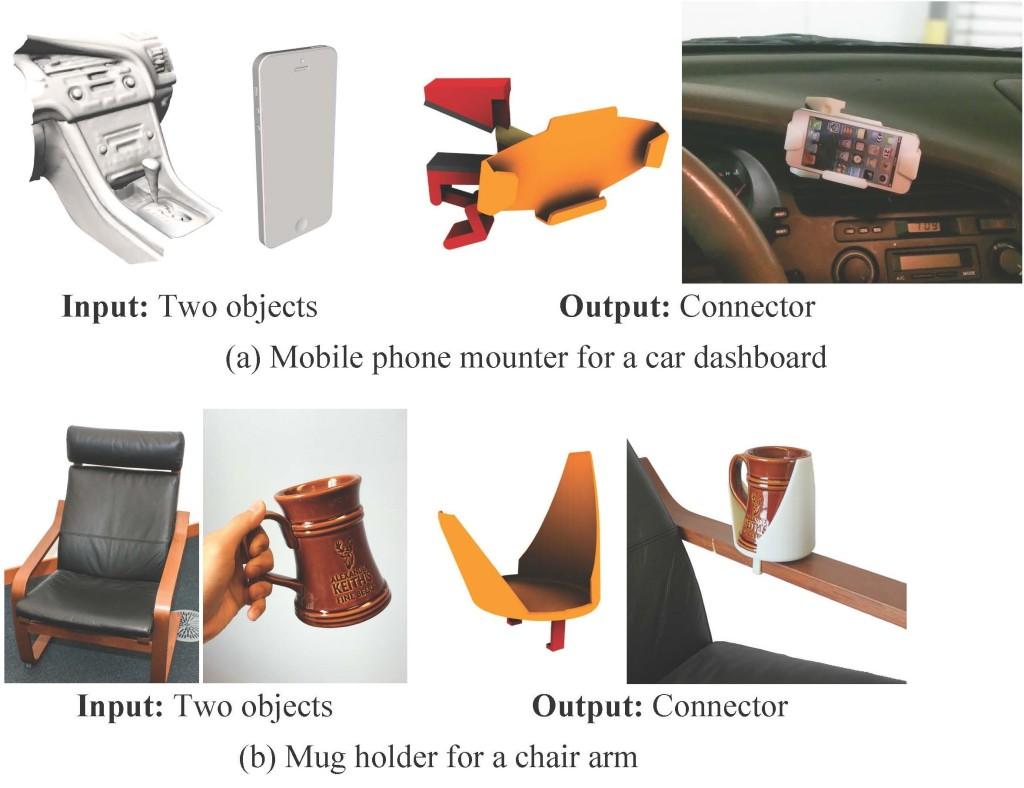 On a road trip last year, I relied on my friend’s GPS to get me through the eight-hour drive. It was working just fine, until the suction cup mounting the GPS to the inside of the windshield unexpectedly detached and sent the device crashing onto the dashboard and bouncing into my friend’s lap. He cursed, I cursed, and for a moment I was afraid we were going to be lost forever in the West Virginia mountains. Thankfully, the GPS recovered just fine from its fall, but I kept warily glancing at it for the rest of the trip, thinking that, with all the technology available nowadays, you’d think someone would come up with a better GPS mount than a suction cup.
On a road trip last year, I relied on my friend’s GPS to get me through the eight-hour drive. It was working just fine, until the suction cup mounting the GPS to the inside of the windshield unexpectedly detached and sent the device crashing onto the dashboard and bouncing into my friend’s lap. He cursed, I cursed, and for a moment I was afraid we were going to be lost forever in the West Virginia mountains. Thankfully, the GPS recovered just fine from its fall, but I kept warily glancing at it for the rest of the trip, thinking that, with all the technology available nowadays, you’d think someone would come up with a better GPS mount than a suction cup.
Disney Research to the rescue! When you hear the name, you may picture a team of scientists sitting around talking about movie magic, new animation techniques and really cool toys. You’re not wrong – the company has come out with some things that make my inner child do a happy dance, such as robots that look like cartoons, 3D printed stuffed animals, and spinning teapots. But they’ve also come up with some ordinary, everyday, brilliant-in-their simplicity inventions that delight my adult self, such as AutoConnect. AutoConnect is a system that allows users to custom-design their own 3D printed connectors for non-3D printed objects.
“The promise of 3D printing is that people can personally create customized objects, but it’s often a difficult promise to fulfill because 3D objects can be so hard to design,” said Jessica Hodgins, Vice President of Disney Research. “That’s particularly true for connectors, so we think AutoConnect could become an important and valuable tool as the 3D printing revolution continues to grow.”
AutoConnect users choose the items that they want to connect and upload information such as the size and weight of the objects, as well as the alignment they want for the connection. AutoConnect then generates several designs that will fit and securely connect the two objects, and the user selects the one he or she prefers.
The system already has a large database of connectors designed to fit commonly shaped objects. The basic connector designs can then be tweaked by the customer according to the size and strength needed. But the real selling point is the ability for the system to design connectors for what Disney Research calls “free form objects,” or objects that don’t fit into the standard shape categories.
“One solution to the problem of 3D design has been the creation of online design repositories,” said Shinjiro Sueda, a post-doctoral researcher at Disney Research. “For instance, there are many designs available online for attaching smartphones to bikes. But finding designs for connecting less common objects can be difficult if not impossible.”
So if you want to securely attach your dragon-shaped coffee mug to the asymmetrical arm of your postmodern desk chair, you can now do so – just provide digital 3D models, either 3D scanned or taken from the Internet, of your mug and your chair arm, indicate the alignment you want, as well as how securely you want the object held, and AutoConnect will take it from there. (I should note that suction cups are used in some of AutoConnect’s designs, but they appear, in the video demonstration, to be stronger and more stable than the one that came with my friend’s GPS. If you’re still anti-suction cup, however, there are plenty of clip-based options for smartphone/dashboard connections.)
Disney Research is presenting the AutoConnect system at the ACM Siggraph Asia 2015 Conference and Exhibition, taking place from November 2-5 in Kobe, Japan. If you’d like to read more in-depth detail about the science behind AutoConnect, you can access the full study here.
Let us know your thoughts on this research in the 3D Printed Connectors forum thread on 3DPB.com.
Subscribe to Our Email Newsletter
Stay up-to-date on all the latest news from the 3D printing industry and receive information and offers from third party vendors.
You May Also Like
Gorilla Sports GE’s First 3D Printed Titanium Cast
How do you help a gorilla with a broken arm? Sounds like the start of a bad joke a zookeeper might tell, but it’s an actual dilemma recently faced by...
Nylon 3D Printed Parts Made More Functional with Coatings & Colors
Parts 3D printed from polyamide (PA, Nylon) 12 using powder bed fusion (PBF) are a mainstay in the additive manufacturing (AM) industry. While post-finishing processes have improved the porosity of...
$25M to Back Sintavia’s Largest Expansion of Metal 3D Printing Capacity Since 2019
Sintavia, the digital manufacturing company specializing in mission-critical parts for strategic sectors, announced a $25 million investment to increase its production capacity, the largest expansion to its operations since 2019....
Velo3D Initiates Public Offering in a Bid to Strengthen Financial Foundations and Drive Future Growth
Velo3D (NYSE: VLD) has been among a number of publicly traded 3D printing firms that have attempted to weather the current macroeconomic climate. After posting a challenging financial report for 2023,...



































